- Home
- Mark Twain
Pudd'nhead Wilson and Those Extraordinary Twins
Pudd'nhead Wilson and Those Extraordinary Twins Read online
Table of Contents
FROM THE PAGES OF PUDD’HEAD WILSON AND “OSE EXTRAORDINARY TWINS”
Title Page
Copyright Page
MARK TWAIN
THE WORLD OF MARK TWAIN AND PUDD’NHEAD WILSON
Introduction
PUDD’NHEAD WILSON
A WHISPER TO THE READER
CHAPTER I
CHAPTER 2
CHAPTER 3
CHAPTER 4
CHAPTER 5
CHAPTER 6
CHAPTER 7
CHAPTER 8
CHAPTER 9
CHAPTER 10
CHAPTER 11
CHAPTER 12
CHAPTER 13
CHAPTER 14
CHAPTER 15
CHAPTER 16
CHAPTER 17
CHAPTER 18
CHAPTER 19
CHAPTER 20
CHAPTER 21
CONCLUSION
THOSE EXTRAORDINARY TWINS
CHAPTER 1
CHAPTER 2
CHAPTER 3
CHAPTER 4
CHAPTER 5
CHAPTER 6
CHAPTER 7
CHAPTER 8
CHAPTER 9
CHAPTER 10
FINAL REMARKS
ENDNOTES
INSPIRED BY MARK TWAIN AND PUDD’ NHEAD WILSON
COMMENTS & QUESTIONS
FOR FURTHER READING
FROM THE PAGES OF PUDD’HEAD WILSON AND “OSE EXTRAORDINARY TWINS”
“Perfect jackass—yes, and it ain’t going too far to say he is a pud-d’ nhead. If he ain’t a pudd’head, I ain’t no judge, that’s all.”
(from Pudd’head Wilson, page 9)
To all intents and purposes Roxy was as white as anybody, but the one sixteenth of her which was black outvoted the other fifteen parts and made her a negro. She was a slave, and saleable as such.
(from Pudd’head Wilson, page 12)
He was a fairly humane man toward slaves and other animals.
(from Pudd’head Wilson, page 14)
She put her cub in Tommy’s elegant cradle and said: “You’s young Marse Tom fum dis out, en I got to practise and git used to ‘memberin’ to call you dat, honey, or I’s gwine to make a mistake sometime en git us bofe into trouble. Dah—now you lay still en don’t fret no mo’, Marse Tom—oh, thank de good Lord in heaven, you’s saved, you’s saved!”
(from Pudd’head Wilson, page 19)
One of the most striking differences between a cat and a lie is that a cat has only nine lives.
(from Pudd’head Wilson, page 38)
The holy passion of Friendship is of so sweet and steady and loyal and enduring a nature that it will last through a whole lifetime, if not asked to lend money.
(from Pudd’head Wilson, page 41)
“And why is this awful difference made between white and black?”
(from Pudd’head Wilson, page 55)
The twins arrived presently, and talk began. It flowed along chattily and sociably, and under its influence the new friendship gathered ease and strength. Wilson got out his Calendar, by request, and read a passage or two from it, which the twins praised quite cordially. This pleased the author so much that he complied gladly when they asked him to lend them a batch of the work to read at home. In the course of their wide travels they had found out that there are three sure ways of pleasing an author; they were now working the best of the three.
(from Pudd’head Wilson, page 60)
“You cur! You scum! You vermin! Do you mean to tell me that blood of my race has suffered a blow and crawled to a court of law about it?”
(from Pudd’head Wilson, page 75)
Nothing so needs reforming as other people’s habits.
(from Pudd’head Wilson, page 91)
If you pick up a starving dog and make him prosperous, he will not bite you. This is the principal difference between a dog and a man.
(from Pudd’head Wilson, page 99)
“The man that can track a bird through the air in the dark and find that bird is the man to track me out and find the Judge’s assassin-no other need apply. And that is the job that has been laid out for poor Pudd’head Wilson, of all people in the world!”
(from Pudd’head Wilson, page 125)
A man who is not born with the novel-writing gift has a troublesome time of it when he tries to build a novel.
(from “Those Extraordinary Twins,” page 143)
“Yes, Luigi; anyway it’s the dark-skinned one; the one that was west of his brother when they stood in the door. Up to all kinds of mischief and disobedience when he was a boy, I’ll be bound. I lay his mother had trouble to lay her hand on him when she wanted him. But the one on the right is as good as gold, I can see that.”
(from “Those Extraordinary Twins,” page 150)
Published by Barnes & Noble Books
122 Fifth Avenue
New York, NY 10011
www.barnesandnoble.com/classics
Pudd‘nhead Wilson, A Tale was first published in the U.K. in 1894, and then later that year in the U.S. as the first part of The Tragedy of Pudd’nhead Wilson, and the Comedy of Those Extraordinary Twins.
Published in 2005 by Barnes & Noble Classics with new Introduction, Notes, Biography, Chronology, Inspired By, Comments & Questions, and For Further Reading.
Introduction, Notes, and For Further Reading
Copyright © 2005 by Darryl Pinckney
Note on Mark Twain, The World of Mark Twain and Pudd‘nhead Wilson, Inspired by Mark Twain and Pudd’nhead Wilson, and Comments & Questions Copyright © 2005 by Barnes & Noble, Inc.
All rights reserved. No part of this publication may be reproduced or transmitted in any form or by any means, electronic or mechanical, including photocopy, recording, or any information storage and retrieval system, without the prior written permission of the publisher.
Barnes & Noble Classics and the Barnes & Noble Classics colophon are trademarks of Barnes & Noble, Inc.
Pudd’head Wilson and Those Extraordinary Twins
ISBN 1-59308-255-X
eISBN : 978-1-411-43298-7
LC Control Number 2005920758
Produced and published in conjunction with:
Fine Creative Media, Inc.
322 Eighth Avenue
New York, NY 10001
Michael J. Fine, President and Publisher
Printed in the United States of America
QM
1 3 5 7 9 10 8 6 4 2
FIRST PRINTING
MARK TWAIN
MarkTwain was born Samuel Langhorne Clemens on November 30, 1835. When Sam was four years old, his family moved to Hannibal, Missouri, a small town later immortalized in The Adventures of Tom Sawyer and Adventures of Huckleberry Finn. After the death of his father, twelve-year-old Sam quit school and supported his family by working as a delivery boy, a grocer’s clerk, and an assistant blacksmith until he was thirteen, when he became an apprentice printer. He worked for several newspapers, traveled throughout the country, and established himself as a gifted writer of humorous sketches. Abandoning journalism at points to work as a riverboat pilot, Clemens adventured up and down the Mississippi, learning the 1,200 miles of the river.
During the 1860s he spent time in the West, in newspaper work and panning for gold, and traveled to Europe and the Holy Land; The Innocents Abroad (1869) and Roughing It (1872) are accounts of those experiences. In 1863 Samuel Clemens adopted a pen name, signing a sketch as “Mark Twain,” and in 1867 Mark Twain won fame with publication of a collection of humorous writings, The Celebrated Jumping Frog of Calaveras County and Other Sketches. After
marrying and settling in Connecticut, Twain wrote his best-loved works: the novels about Tom Sawyer and Huckleberry Finn, and the nonfiction work Life on the Mississippi. Meanwhile, he continued to travel and had a successful career as a public lecturer.
In his later years, Twain saw the world with increasing pessimism following the death of his wife and two of their three daughters. The tone of his later novels, including The Tragedy ofPudd‘nhead Wilson and A Connecticut Yankee in King Arthur’s Court, became cynical and dark. Having failed as a publisher and suffering losses from ill-advised investments, Twain was forced by financial necessity to maintain a heavy schedule of lecturing. Though he had left school at an early age, his genius was recognized by Yale University, the University of Missouri, and Oxford University in the form of honorary doctorate degrees. He died in his Connecticut mansion, Stormfield, on April 21, 1910.
THE WORLD OF MARK TWAIN AND PUDD’NHEAD WILSON
1835 Samuel Langhorne Clemens is born prematurely in Florida, Missouri, the fourth child of John Marshall Clemens and Jane Lampton Clemens.
1839 The family moves to Hannibal, the small Missouri town on the west bank of the Mississippi River that will become the model for the setting of Tom Sawyer and Huckleberry Finn.
1840 American newspapers gain increased readership as urban populations swell and printing technology improves.
1847 John Clemens dies, leaving the family in financial difficulty. Sam quits school at the age of twelve.
1848 Sam becomes a full-time apprentice to Joseph Ament of the Missouri Courier.
1850 Sam’s brother Orion, ten years his senior, returns to Hannibal and establishes the Journal; he hires Sam as a compositor. Steamboats become the primary means of transport on the Mississippi River.
1852 Sam edits the failing journal while Orion is away. After he reads local humor published in newspapers in New England and the Southwest, Sam begins printing his own humorous sketches in the, Journal. He submits “The Dandy Frightening the Squatter” to the Carpet-Bag of Boston, which publishes the sketch in the May issue.
1853 Sam leaves Hannibal and begins working as an itinerant printer; he visits St. Louis, New York, and Philadelphia. His brothers Orion and Henry move to Iowa with their mother.
1854 Transcendentalism flourishes in American literary culture; Henry David Thoreau publishes Walden.
1855 Sam works again as a printer with Orion in Keokuk, Iowa.
1856 Sam acquires a commission from Keokuk’s Daily Post to write humorous letters; he decides to travel to South America.
1857 Sam takes a steamer to New Orleans, where he hopes to find a ship bound for South America. Instead, he signs on as an apprentice to river pilot Horace Bixby and spends the next two years learning how to navigate a steamship up and down the Mississippi. His experiences become material for Life on the Mississippi and his tales of Tom Sawyer and Huck Finn.
1858 Sam’s brother Henry dies in a steamboat accident.
1859 Samuel Clemens becomes a fully licensed river pilot.
1861 The American Civil War erupts, putting an abrupt stop to river trade between North and South. Sam serves with a Confederate militia for two weeks before venturing to the Nevada Territory with Orion, who had been appointed by President Abraham Lincoln as secretary of the new Territory.
1862 After an unsuccessful stint as a miner and prospector for gold and silver, Clemens begins reporting for the Territorial Enterprise in Virginia City, Nevada.
1863 Clemens signs his name as “Mark Twain” on a humorous travel sketch printed in the Territorial Enterprise. The pseudonym , a riverboat term meaning “two fathoms deep,” connotes barely navigable water.
1864 After challenging his editor to a duel, Twain is forced to leave Nevada and lands a job with a San Francisco newspaper . He meets Artemus Ward, a popular humorist, whose techniques greatly influence Twain’s writing.
1865 Robert E. Lee’s army surrenders, ending the Civil War. While prospecting for gold in Calaveras County, California, Twain hears a tale he uses for a story that makes him famous; originally titled “Jim Smiley and His Jumping Frog,” it is published in New York’s Saturday Press.
1866 Twain travels to Hawaii as a correspondent for the Sacramento Union; upon his return to California, he delivers his first public lecture, beginning a successful career as a humorous speaker.
1867 Twain travels to New York, and then to Europe and the Holy Land aboard the steamer Quaker City; during five months abroad, he contributes to California’s largest paper, Sacramento’s Alta California, and writes several letters for
the New York Tribune. He publishes a volume of stories and sketches, The Celebrated Jumping Frog of Calaveras County and Other Sketches.
1868 Twain meets and falls in love with Olivia (Livy) Langdon. His overseas writings have increased his popularity; he signs his first book contract and begins The Innocents Abroad, sketches based on his trip to Europe and the Holy Land. He embarks on a lecture tour of the American Midwest.
1869 Twain becomes engaged to Livy, who acts as his editor from that time on. The Innocents Abroad, published as a subscription book, is an instant success, selling nearly 100,000 copies in the first three years.
1870 Twain and Livy marry. Their son, Langdon, is born; he lives only two years.
1871 The Clemens move to Hartford, Connecticut.
1872 Roughing It, an account of Twain’s adventures out West, is published to enormous success. The first of Twain’s three daughters, Susy, is born. Twain strikes up a lifelong friendship with the writer William Dean Howells.
1873 Ever the entrepreneur, Twain receives the patent for Mark Twain’s Self-Pasting Scrapbook, an invention that is a commercial success. He publishes The Gilded Age, a collaboration with his neighbor Charles Dudley Warner that satirizes the post-Civil War era.
1874 His daughter Clara is born. The family moves into a mansion in Hartford in which they will live for the next seventeen years.
1876 The Adventures of Tom Sawyer is published.
1877 Twain collaborates with Bret Harte—an author known for his use of local color and humor and for his parodies of Cooper, Dickens, and Hugo—to produce the play Ah Sin.
1880 Twain invests in the Paige typesetter and loses thousands of dollars. He publishes A Tramp Abroad, an account of his travels in Europe the two previous years. His daughter Jean is born.
1881 The Prince and the Pauper, Twain’s first historical romance, is published.
1882 Twain plans to write about the Mississippi River and makes the trip from New Orleans to Minnesota to refresh his memory.
1883 The nonfiction work Life on the Mississippi is published.
1884 Adventures of Huckleberry Finn, a book Twain worked on for nearly ten years, is published in England; publication in the United States is delayed until the following year because an illustration plate is judged to be obscene.
1885 When Adventures of Huckleberry Finn is published in America—by Twain’s ill-fated publishing house, run by his nephew Charles Webster—controversy immediately surrounds the book. Twain also publishes the memoirs of his friend former President Ulysses S. Grant.
1888 He receives an honorary Master of Arts degree from Yale University.
1889 He publishes A Connecticut Yankee in King Arthur’s Court, the first of his major works to be informed by a deep pessimism. He meets Rudyard Kipling, who had come to America to meet Twain, in Livy’s hometown of Elmira, New York.
1890 Twain’s mother dies.
1891 Financial difficulties force the Clemens family to close their Hartford mansion; they move to Berlin, Germany.
1894 Twain publishes The Tragedy of Pudd’head Wilson, a dark novel about the aftermath of slavery, which sells well, and Tom Sawyer Abroad, which does not. Twain’s publishing company fails and leaves him bankrupt.
1895 Twain embarks on an ambitious worldwide lecture tour to restore his financial position.
1896 He publishes Personal Recollections of Joan of Arc and Tom Sawyer,
Detective. His daughter Susy dies of spinal meningitis.
1901 Twain is awarded an honorary doctorate degree from Yale.
1902 Livy falls gravely ill. Mark Twain’s Huckleberry Finn, a stage adaptation of the novel, opens to favorable reviews. Though he is credited with coauthorship, Twain has little to do with the play and never sees it performed. He receives an honorary doctorate degree from the University of Missouri.
1903 Hoping to restore Livy’s health, Twain takes her to Florence, Italy.
1904 Livy dies, leaving Twain devastated. He begins dictating an uneven autobiography that he never finishes.
1905 Theodore Roosevelt invites Twain to the White House. Twain enjoys a gala celebrating his seventieth birthday in
New York. He continues to lecture, and he addresses Congress on copyright issues.
1906 Twain’s biographer Albert Bigelow Paine moves in with the family.
1907 Twain travels to Oxford University to receive an honorary Doctor of Letters degree.
1908 He settles in Redding, Connecticut, at Stormfield, the mansion that is his final home.
1909 Twain’s daughter Clara marries; the author dons his Oxford robe for the ceremony. His daughter Jean dies.
1910 Twain travels to Bermuda for his health. He develops heart problems and, upon his return to Stormfield, dies, leaving behind a cache of unpublished work.

 A Connecticut Yankee in King Arthur's Court
A Connecticut Yankee in King Arthur's Court Adventures of Huckleberry Finn
Adventures of Huckleberry Finn The Adventures of Tom Sawyer, Part 1.
The Adventures of Tom Sawyer, Part 1. The Prince and the Pauper
The Prince and the Pauper The American Claimant
The American Claimant Eve's Diary, Complete
Eve's Diary, Complete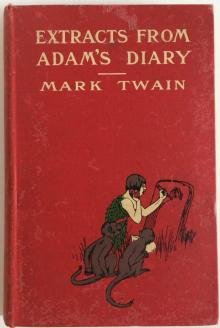 Extracts from Adam's Diary, translated from the original ms.
Extracts from Adam's Diary, translated from the original ms. A Tramp Abroad
A Tramp Abroad The Best Short Works of Mark Twain
The Best Short Works of Mark Twain Humorous Hits and How to Hold an Audience
Humorous Hits and How to Hold an Audience The Speculative Fiction of Mark Twain
The Speculative Fiction of Mark Twain The Facts Concerning the Recent Carnival of Crime in Connecticut
The Facts Concerning the Recent Carnival of Crime in Connecticut Alonzo Fitz, and Other Stories
Alonzo Fitz, and Other Stories The $30,000 Bequest, and Other Stories
The $30,000 Bequest, and Other Stories Pudd'nhead Wilson and Those Extraordinary Twins
Pudd'nhead Wilson and Those Extraordinary Twins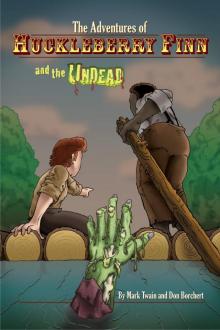 The Adventures of Huckleberry Finn and the Undead
The Adventures of Huckleberry Finn and the Undead Sketches New and Old
Sketches New and Old The Man That Corrupted Hadleyburg
The Man That Corrupted Hadleyburg A Tramp Abroad — Volume 06
A Tramp Abroad — Volume 06 A Tramp Abroad — Volume 02
A Tramp Abroad — Volume 02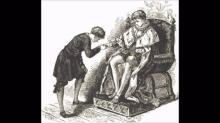 The Prince and the Pauper, Part 1.
The Prince and the Pauper, Part 1. Adventures of Huckleberry Finn, Chapters 16 to 20
Adventures of Huckleberry Finn, Chapters 16 to 20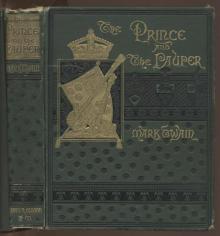 The Prince and the Pauper, Part 9.
The Prince and the Pauper, Part 9. Adventures of Huckleberry Finn, Chapters 21 to 25
Adventures of Huckleberry Finn, Chapters 21 to 25 Tom Sawyer, Detective
Tom Sawyer, Detective A Tramp Abroad (Penguin ed.)
A Tramp Abroad (Penguin ed.) Adventures of Huckleberry Finn, Chapters 36 to the Last
Adventures of Huckleberry Finn, Chapters 36 to the Last The Mysterious Stranger, and Other Stories
The Mysterious Stranger, and Other Stories A Tramp Abroad — Volume 03
A Tramp Abroad — Volume 03 The Adventures of Tom Sawyer, Part 3.
The Adventures of Tom Sawyer, Part 3. Adventures of Huckleberry Finn, Chapters 06 to 10
Adventures of Huckleberry Finn, Chapters 06 to 10_preview.jpg) The Adventures of Huckleberry Finn (Tom Sawyer's Comrade)
The Adventures of Huckleberry Finn (Tom Sawyer's Comrade) Adventures of Huckleberry Finn, Chapters 31 to 35
Adventures of Huckleberry Finn, Chapters 31 to 35 The Man That Corrupted Hadleyburg, and Other Stories
The Man That Corrupted Hadleyburg, and Other Stories A Tramp Abroad — Volume 07
A Tramp Abroad — Volume 07 Editorial Wild Oats
Editorial Wild Oats Adventures of Huckleberry Finn, Chapters 26 to 30
Adventures of Huckleberry Finn, Chapters 26 to 30 1601: Conversation as it was by the Social Fireside in the Time of the Tudors
1601: Conversation as it was by the Social Fireside in the Time of the Tudors A Tramp Abroad — Volume 05
A Tramp Abroad — Volume 05 Sketches New and Old, Part 1.
Sketches New and Old, Part 1. The Adventures of Tom Sawyer, Part 2.
The Adventures of Tom Sawyer, Part 2. A Connecticut Yankee in King Arthur's Court, Part 8.
A Connecticut Yankee in King Arthur's Court, Part 8. A Tramp Abroad — Volume 01
A Tramp Abroad — Volume 01 The Adventures of Tom Sawyer, Part 5.
The Adventures of Tom Sawyer, Part 5. Adventures of Huckleberry Finn, Chapters 01 to 05
Adventures of Huckleberry Finn, Chapters 01 to 05 A Connecticut Yankee in King Arthur's Court, Part 1.
A Connecticut Yankee in King Arthur's Court, Part 1.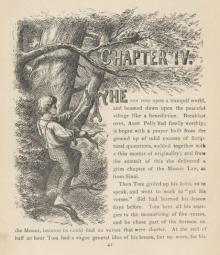 The Adventures of Tom Sawyer, Part 4.
The Adventures of Tom Sawyer, Part 4. A Connecticut Yankee in King Arthur's Court, Part 2.
A Connecticut Yankee in King Arthur's Court, Part 2. The Adventures of Tom Sawyer, Part 7.
The Adventures of Tom Sawyer, Part 7. A Connecticut Yankee in King Arthur's Court, Part 3.
A Connecticut Yankee in King Arthur's Court, Part 3. Sketches New and Old, Part 4.
Sketches New and Old, Part 4. Sketches New and Old, Part 3.
Sketches New and Old, Part 3. A Connecticut Yankee in King Arthur's Court, Part 7.
A Connecticut Yankee in King Arthur's Court, Part 7. A Connecticut Yankee in King Arthur's Court, Part 5.
A Connecticut Yankee in King Arthur's Court, Part 5. A Connecticut Yankee in King Arthur's Court, Part 6.
A Connecticut Yankee in King Arthur's Court, Part 6. A Connecticut Yankee in King Arthur's Court, Part 4.
A Connecticut Yankee in King Arthur's Court, Part 4. Sketches New and Old, Part 2.
Sketches New and Old, Part 2. Sketches New and Old, Part 6.
Sketches New and Old, Part 6. Adventures of Huckleberry Finn, Chapters 11 to 15
Adventures of Huckleberry Finn, Chapters 11 to 15 Personal Recollections of Joan of Arc
Personal Recollections of Joan of Arc Sketches New and Old, Part 5.
Sketches New and Old, Part 5. Eve's Diary, Part 3
Eve's Diary, Part 3 Sketches New and Old, Part 7.
Sketches New and Old, Part 7. Mark Twain on Religion: What Is Man, the War Prayer, Thou Shalt Not Kill, the Fly, Letters From the Earth
Mark Twain on Religion: What Is Man, the War Prayer, Thou Shalt Not Kill, the Fly, Letters From the Earth Tales, Speeches, Essays, and Sketches
Tales, Speeches, Essays, and Sketches A Connecticut Yankee in King Arthur's Court, Part 9.
A Connecticut Yankee in King Arthur's Court, Part 9. Our Fellow Savages of the Sandwich Islands (version 1)
Our Fellow Savages of the Sandwich Islands (version 1) 1601
1601 Letters from the Earth
Letters from the Earth Curious Republic Of Gondour, And Other Curious Whimsical Sketches
Curious Republic Of Gondour, And Other Curious Whimsical Sketches The Mysterious Stranger
The Mysterious Stranger Life on the Mississippi
Life on the Mississippi Roughing It
Roughing It Alonzo Fitz and Other Stories
Alonzo Fitz and Other Stories The 30,000 Dollar Bequest and Other Stories
The 30,000 Dollar Bequest and Other Stories The Adventures of Huckleberry Finn taots-2
The Adventures of Huckleberry Finn taots-2 A Double-Barreled Detective Story
A Double-Barreled Detective Story adam's diary.txt
adam's diary.txt A Horse's Tale
A Horse's Tale Autobiography Of Mark Twain, Volume 1
Autobiography Of Mark Twain, Volume 1 The Comedy of Those Extraordinary Twins
The Comedy of Those Extraordinary Twins Following the Equator
Following the Equator Goldsmith's Friend Abroad Again
Goldsmith's Friend Abroad Again No. 44, The Mysterious Stranger
No. 44, The Mysterious Stranger The Stolen White Elephant
The Stolen White Elephant The $30,000 Bequest and Other Stories
The $30,000 Bequest and Other Stories The Curious Republic of Gondour, and Other Whimsical Sketches
The Curious Republic of Gondour, and Other Whimsical Sketches Prince and the Pauper (Barnes & Noble Classics Series)
Prince and the Pauper (Barnes & Noble Classics Series) The Portable Mark Twain
The Portable Mark Twain Connecticut Yankee in King Arthur's Court (Barnes & Noble Classics Series)
Connecticut Yankee in King Arthur's Court (Barnes & Noble Classics Series)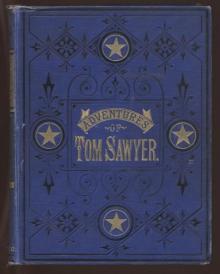 The Adventures of Tom Sawyer taots-1
The Adventures of Tom Sawyer taots-1 A Double Barrelled Detective Story
A Double Barrelled Detective Story Eve's Diary
Eve's Diary A Dog's Tale
A Dog's Tale The Mysterious Stranger Manuscripts (Literature)
The Mysterious Stranger Manuscripts (Literature) The Complete Short Stories of Mark Twain
The Complete Short Stories of Mark Twain What Is Man? and Other Essays
What Is Man? and Other Essays The Adventures of Huckleberry Finn
The Adventures of Huckleberry Finn Adventures of Huckleberry Finn and Zombie Jim
Adventures of Huckleberry Finn and Zombie Jim Who Is Mark Twain?
Who Is Mark Twain? Christian Science
Christian Science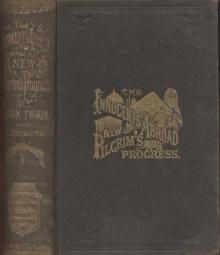 The Innocents Abroad
The Innocents Abroad Some Rambling Notes of an Idle Excursion
Some Rambling Notes of an Idle Excursion Autobiography of Mark Twain
Autobiography of Mark Twain Those Extraordinary Twins
Those Extraordinary Twins Autobiography of Mark Twain: The Complete and Authoritative Edition, Volume 1
Autobiography of Mark Twain: The Complete and Authoritative Edition, Volume 1